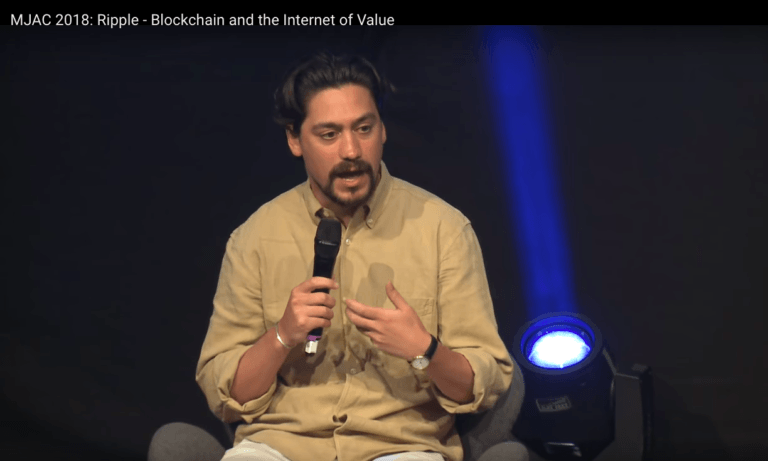Ripple’s Daniel Aranda recently spoke at the CryptoCompare MJAC Blockchain Summit 2018 in London about what he called the “Internet of Value.” Aranda has been working at Ripple for the past five years in the area of business development, and currenly he is the managing director of Ripple’s xSpring initiative. This venture “will invest in, incubate, acquire and provide grants to companies and projects run by proven entrepreneurs who will be using “the digital asset XRP and the XRP Ledger, the open-sourced, decentralized technology behind XRP, to solve their customers’ problems in a transformative way.”
Here are some highlights from this talk:
What Is Internet of Value?
- “In some ways, we view that expression — ‘internet of value’ — as very literal: that there will be a new internet and that money will be directly embedded in it.”
- “We think that lot of internet of value is going to operate in the same way, where you’re having servers, like validators and miners, actually being able to communicate with each other, and they are really confirming kind of the movement and creation of value and of money.”
- “We think that if the internet today is tethered with packets of information and data being sent around, the internet of value will have a similar kind of architecture, but what will be sent around is money (value). We view payments as this connected tissue to whatever this new kind of internet is.”
- “We think payments really matters for finance, really matters for the internet, but it is actually going to recreate the fundamental architecture of the internet as well.”
Why Did Ripple Decide to Focus on Cross-Border Payments?
- “As we were thinking about different use cases… around payments… the highest friction and pain point that we found was around cross-border. So, if you think about here in the UK, you have services like the Faster Payments Service, CHAPS, and BACS, RTGS from the Bank of England, you have great payment systems that already exist on a domestic or regional level… so there is SEPA in the EU as well… but because there is no global central bank, you don’t really have a global consolidated payments system… you have layers that maybe simulate that, things like Visa and MasterCard or even SWIFT as a messaging service… And we thought that a decentralized architecture, blockchain technology, and these public ledgers could really help kind of interoperate a lot of these different systems. So, with that thesis in mind, we just started looking at markets [to see] who would be the first users, who is the right first customer to focus work.”
- “What we discovered is that banks are the primary participants in payment systems. They are the ones who are serving the vast majority of volume in the arena today. So, we started producing solutions for them and seeing if we could solve problems for them, and we got a lot of attraction around that.”
- “So our software solutions, our enterprise solutions, right now, are sold to around 120 financial institutions around the world.”
Ripple’s Customers More Interested in Revenue Growth Than Cost Savings
- “I don’t think the real value proposition and the business case for adopting a crypto-based solution comes around cost savings. I think that’s part of it, but I think there’s been a lot of focus that is a bit wasted on how much these technologies can kind of remove cost or improve processes.”
- “I think it’s about growth, it’s about revenue potential… A lot of times when we speak with a bank, it’s more speaking about ‘How can you offer a new kind of service to your customers that is either going to help you get more from customers you already have or is it going to enable you to pursue new kinds of customers and enter new markets?’… So, a good example of that, one bank we love working with, is the Siam Commercial Bank in Thailand… There’s this big opportunity happening in Southeast Asia, where there’s going to be double digit growth in e-commerce sales over the next half decade, and they view Ripple, and crypto technologies in general, as a strategic weapon to go seize that opportunity and really offer innovative solutions to the market to be able to process payments better for their customers.”
What Lies Ahead in Ripple’s Future?
- “I think what you can expect from Ripple is more focus and traction around cross-border payments… And if one of our early competitors as this market bridges out is SWIFT… if we are going to beat them, what we offer has to be really good… and we think our traction is playing out, and network effects are starting to build around that.”
- “Now, Ripple is one company focused on one use case. And the initiative xSpring is going to be essentially providing support to a variety of developers and companies to think about different use cases for the underlying protocols that we use. So, a quick example of that is our CTO has actually spun out to start his own company… Stefan Thomas had been our CTO for around five years now… His new company is called Coil. It is also focused on payments, but more focused on micropayments, specifically as an alternative to ad-based models to monetize web content [articles, streaming video] and the protocols he will be using for that project include the XRP Ledger, and also Interledger, which is an interoperability protocol, and so allowing clearances between different blockchains, to allow money to move, as well as… Codius, which is a smart contracts platform that is agnostic to any underlying blockchain.”
You can find the full length video of this talk on YouTube.









